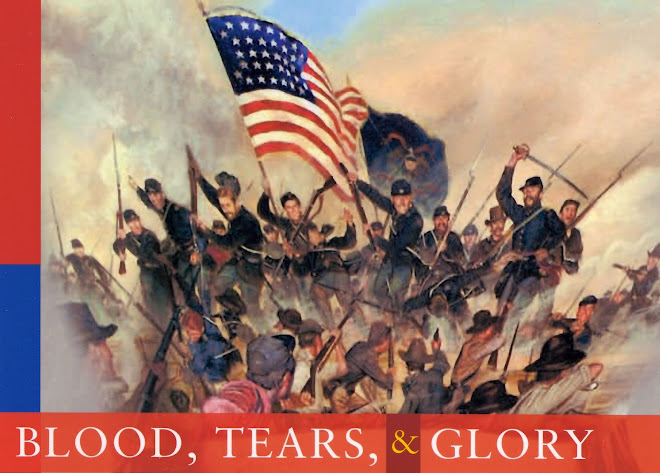
Garfield rising
Like many other volunteer officers, James A. Garfield lacked military experience, but made up for it in enthusiasm, ambition, and natural talent. Today, he has a chance to prove it.
A professor at what is now Hiram College in Ohio, Garfield had struggled to win a command. After some disappointments, Garfield finally was appointed to head the 42nd Ohio Volunteer infantry, which trained at Camp Chase in Columbus during the fall of 1861. The inexperienced Garfield carved some wooden blocks and used them in his tent at night to practice maneuvers. A big, gregarious man who liked his fling his arms around friends, he suffered from the loneliness of command and talked to his horse out of sheer desperation.
In December, the 42nd Ohio joined Don Carlos Buell’s command in Kentucky. Buell immediately put Colonel Garfield in command of a brigade of several regiments and sent him into the Big Sandy Valley region in mountainous eastern Kentucky. After a small clash at Paintsville on the 7th, Garfield daringly attacks a Confederate force today at Middle Creek.
Garfield, the amateur soldier, had about 1,800 infantrymen, 300 cavalrymen, and no artillery. His opponent is CSA Brig. Gen. Humphrey Marshall, a graduate of West Point who had won a fine reputation in the Mexican War. Not only was Marshall an experienced professional, he was believed to have a stronger force: 2,500 infantrymen, three pieces of artillery, and six companies of cavalry.
But the Confederates are demoralized, tired and weak from hunger. Garfield’s attack on the entrenched enemy soldiers scatters them and sends Marshall fleeing. Afterwards, Garfield’s men find 27 dead Confederates on the fieldand captured 25 prisoners, as well as some supplies. Garfield’s force lost two dead and 25 wounded.
It was a minor affair, but a signal achievement for an untested amateur soldier. It brought praise from Buell (“These services have called into action the highest qualities of a soldier—perseverance and courage.”). And, because Garfield had some political influence in addition to this achievement, he would soon receive a brigadier generalship.
But there is one area of his life where Garfield is doing less well: his three-year marriage to Lucretia (“Crete”) Rudolph (pictured above). As a young man, Garfield was having trouble settling down with one woman and his letters to Crete are infrequent and dry. By contrast, Crete is writing him letters filled with endearments and pleas for attention. For example, in October she had written, “Dear Dear Jamie: I do not willingly think you wicked or neglectful, but how can the heart trust all in silence? It almost breaks my heart….”
ELSEWHERE IN THE WAR: Stonewall Jackson’s Confederate cavalry enters Romney, in the panhandle section of western Virginia. They are unopposed, replacing the Federals who had been lodged there for little more than two months. During the war, Romney will change hands dozens of times, dizzying the locals who were simply trying to figure out who was in charge here.
In Ulysses S. Grant’s district near Cairo, Illinois, the Ohio general begins an advance on Confederates ensconced in Columbus, Kentucky. It is not intended as an attack, but as a diversion to draw attention from a hoped-for Union effort in eastern Tennessee. However, Don Carlos Buell stubbornly resists Lincoln’s urgings to move on behalf of Union loyalists in eastern Tennessee. In Washington, a frustrated President exclaims, “As everywhere else, nothing can be done.” But changes are coming.
IT’S COMING SOONER THAN YOU THINK: April 12, 2011—less than 3½ years from now!—will be the 150th anniversary of the outbreak of the Civil War. In 1861, April 12 was the day Confederates opened fire on Fort Sumter in Charleston Harbor.
Your suggestions, comments, and questions about this blog are always welcome. Address the author: Ohioan@bloodtearsandglory.com
For more information about the author and his newest book, please go to http://www.orangefrazer.com/btg




No comments:
Post a Comment